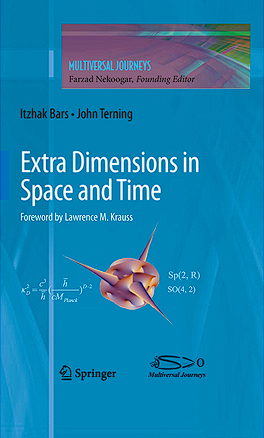
Extra Dimensions in Space and Time
Author: Itzhak Bars Category: Relativitas dan Gravitasi Publisher: Springer ISBN: 978-0-387-77638-5One of the most popular topics in Multiversal Journey’s lecture series has been the
concept of extra dimensions in space and time. The topic has been covered in many
of our conferences within the last few years: four times by the authors of this book.
The word dimension comes from the 14th century Latin dimetiri meaning to
measure out. Historically, the notion of a dimension has long been used in geometry
for centuries. The dimension of an object is specified by its coordinates (degrees
of freedom: longitude, latitude, and height). In algebra, the notion of a dimension
takes an abstract form such as dimensions of a vector space which are not the same
dimensions we experience everyday in life.
In physics, the idea of extra spatial dimensions originates from Nordstöm’s
5-dimensional vector theory in 1914, followed by Kaluza–Klein theory in 1921,
in an effort to unify general relativity and electromagnetism in a 5-dimensional
space–time (4 dimensions for space and 1 for time). The Kaluza–Klein theory didn’t
generate enough interest with physicist for the next five decades, due to its problems
with inconsistencies. With the advent of supergravity theory (the theory that unifies
general relativity and supersymmetry theories) in late 1970s and eventually, string
theories (1980s), and M-theory (1990s), the dimensions of space–time increased to
11 (10-space and 1-time dimension).
In contrast, to the volume of research that has been conducted in the area of extra
spatial dimensions in the last 40 years, not much time has been devoted to multi
dimensional time theories. Earlier attempts in multi-dimensional time theories had
problems with violating causality among other issues. Two-time physics, a theory
with 4-space and 2-time dimensions, is well covered in this book.
Back